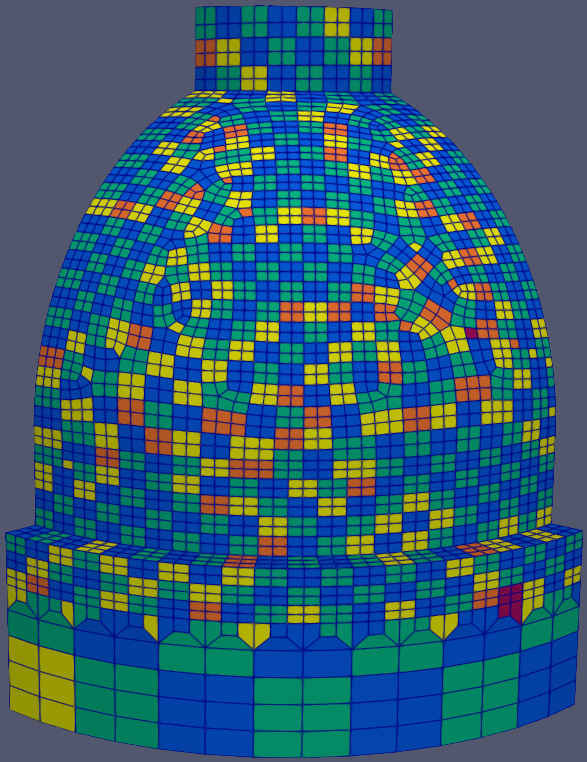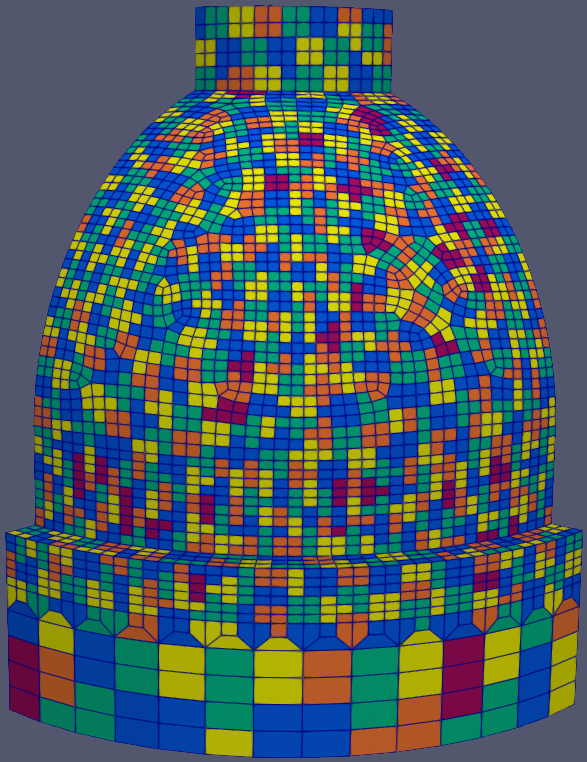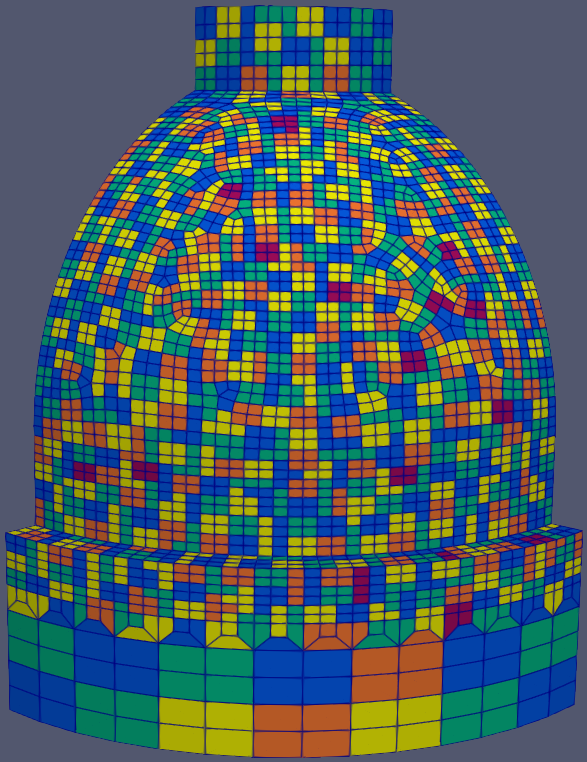Enclosure Patches
Todo
finish RadE patches page
Patch Algorithms
The genre program supports the following patching algorithms.
Result of running PAVE (left), VSA (middle), and METIS (right) on the ‘basic hemi’ enclosure. |
||
General guidance
We provide general guidance for choosing an algorithm given performance constraints and desired properties for the resulting patches.
PAVE
Pros: produces neat tilings that account for patch planarity and irregularity. The algorithm is fast (linear in the number of faces).
Cons: uniform coarsening of the mesh. Only supports faces-per-patch ratios of roughly 4 or 6, depending on whether the mesh is hexahedral or tetrahedral.
VSA
Pros: works well for arbitrary faces-per-patch ratios. Provides flexible control of the geometric patch diameters. Maximizes patch planarity. Provides choice between patches with roughly the same number of faces, or roughly the same surface area.
Cons: can be extremely slow for large meshes (scales badly), due to a quadratic dependence on the number of faces. However, once computed, the result can be reused with the FILE method allowing experimentation with Chaparral parameters without rerunning the algorithm.
METIS
Pros: works well for arbitrary faces-per-patch ratios. The algorithm is fast by leveraging the METIS library [1]. Provides choice between patches with roughly the same number of faces, or roughly the same surface area. In the second case, the constraint is tight, so the faces-per-patch ratio is largely ignored and need only be approximate.
Cons: New and not extensively tested. Patch planarity is not explicitly maximized, but at least patches will not straddle “sharp edges” (see here for more details). Note that it is not clear whether patch planarity, or lack thereof, affects the quality of the thermal radiation model.
VAC
Retained for developer use and not recommended for regular users. It has similar limitations to PAVE, but produces lower quality patches.
Refer to each algorithm’s documentation for extensive details on its properties, limitations, and supported inputs.
PATCHES Namelist
&PATCHES
patch_algorithm = 'PAVE'
verbosity_level = 3
max_angle = 30.0
pave_split_patch_size = 4
/
Example PATCHES namelist
The PATCHES namelist defines the parameters used by the patching algorithms. The namelist supports many parameters, but not all parameters are used by all algorithms. Parameters only used by a particular algorithm are prefixed with the algorithm’s name.
Refer to the PATCES namelist documentation for detailed information on these parameters.
References
George Karypis and Vipin Kumar. A fast and high quality multilevel scheme for partitioning irregular graphs. SIAM J. Sci. Comput., 20(1):359–392, December 1998.


